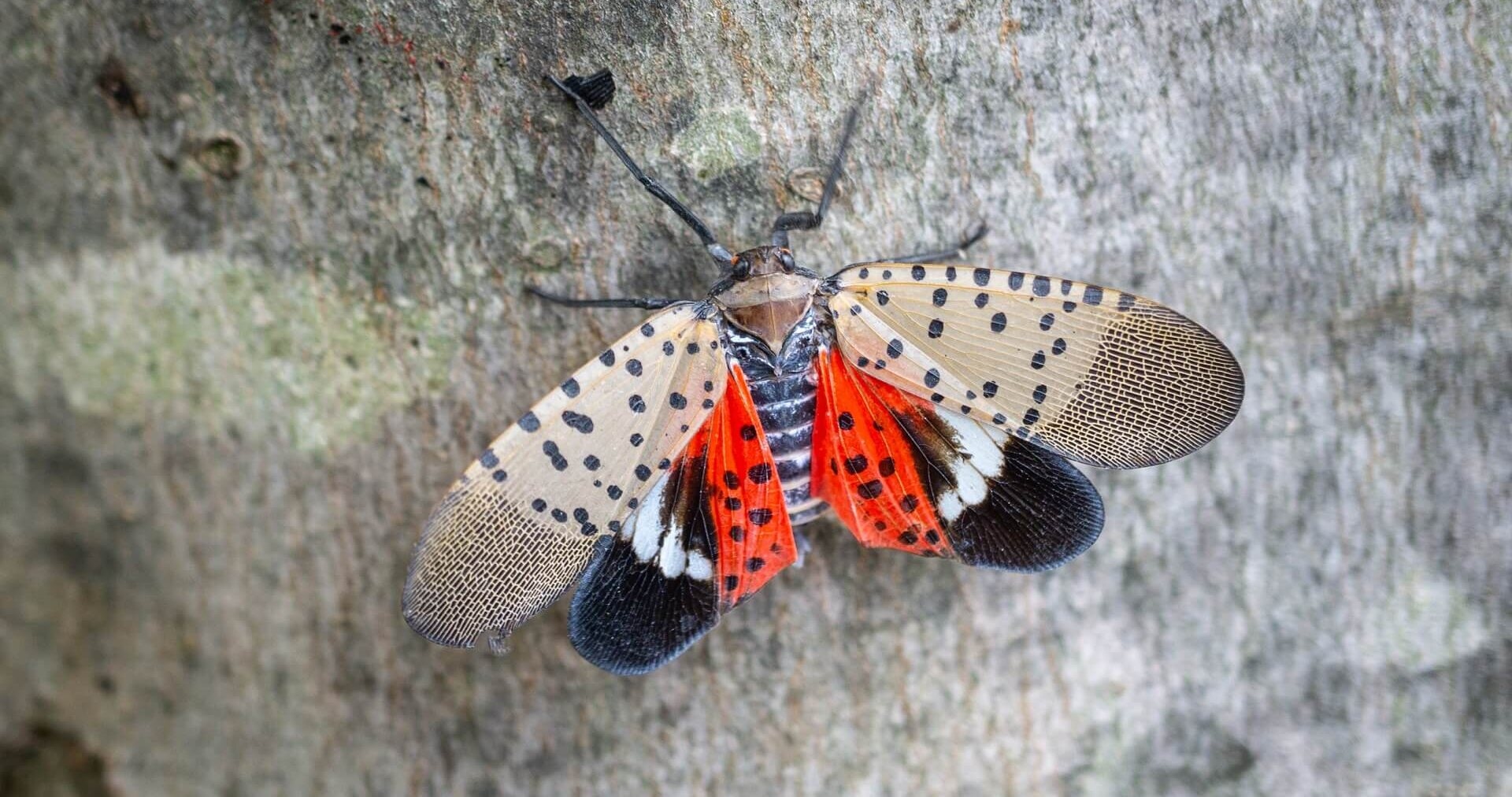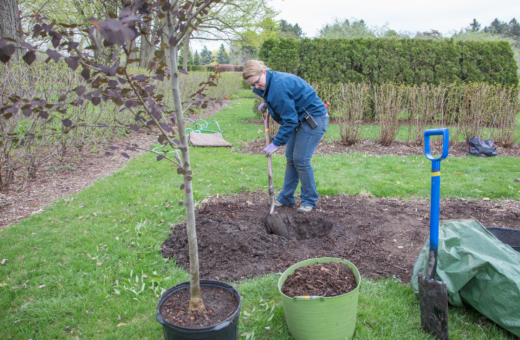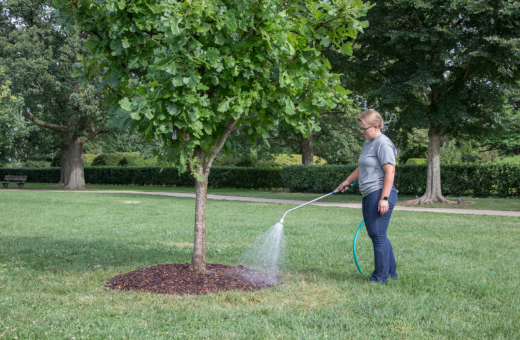September 27, 2023
How should Illinois residents respond to the state’s newest insect pest, the spotted lanternfly? First, don’t panic, according to tree experts in the Plant Clinic at The Morton Arboretum.
The insect is not an immediate threat to established trees, and is not present in large numbers. According to the Illinois Department of Agriculture, which announced the first confirmed siting in the state on Tuesday, the bug does not present any human or animal health concerns.
Spotted lanternfly, a sap-sucking insect from Asia, has become increasingly common across the Northeast in recent years after being first spotted in Pennsylvania in 2014. In New York and other states, the public has been advised to kill adults by stamping on them.
If the insects multiply, they are most likely to be nuisance pests that may affect people’s enjoyment of the outdoors. The insect feeds on more than 70 species of trees and other plants. It is a potential problem for farmers who grow fruits such as apples, peaches, and cherries or the hops used in making beer, as well as wineries that grow grapes.
The spotted lanternfly also is known to feed on trees including oak, walnut, sycamore, pine, willow, and maple, especially silver maple. It has not been found to cause major damage to mature trees, although some research suggests that the sap-feeding may weaken young trees.
One of the spotted lanternfly’s favorite hosts is tree of heaven (Ailanthus altissima), a weedy species of tree that is common in vacant lots and alleys, as well as many yards. Since tree of heaven is so ubiquitous, it may attract numbers of spotted lanternflies that later move on to other trees and plants.
The spotted lanternfly is not a fly but a planthopper, though it is often mistaken for a moth. At rest, the adult insect shows pale outer wings with black spots; when it opens its wings, one set is splotched with red. The wings are ½ to 1 inch long. The insect is hard to spot because it likes to hide under brush or in other nooks and crannies.
Adults will die in fall, but the egg masses they leave behind on tree bark and other surfaces can overwinter and hatch in spring.
What should Illinois homeowners do about spotted lanternflies? Here is advice from the Arboretum’s Plant Clinic:
Remove brush around tree of heaven. Shrubs, wild grapevines, and other brush can provide hiding places for the insects around their favorite host.
Keep your eyes open. Although spotted lanternfly has been confirmed in Illinois, researchers and government agencies still need to understand how widely it has spread. Reports from the public will be important to planning a response. Look for the insects only on public property or your own landscape.
Report sightings. If you see a spotted lanternfly, take a picture and email it to lanternfly@illinois.edu. To report a sighting outside Illinois, contact your state department of agriculture.
Stamp it out. Once you’ve reported the sighting, kill the insect if you can do so easily and safely. If it is on the ground, simply stamp on it.
Don’t rush to spray. Contact the Plant Clinic for guidance if you are considering insecticides. Certain insecticides may be effective, but only if applied at the right time in the insect’s life cycle. Used improperly, insecticides will be ineffective and are likely to also kill important beneficial insects.
Spread the word. Let your community know about this new insect pest so they can keep an eye out for it too.
Consider removing tree of heaven. If you have a tree of heaven on your property, consider having it cut down. For advice on identifying and removing this weedy tree, consult the Plant Clinic.



